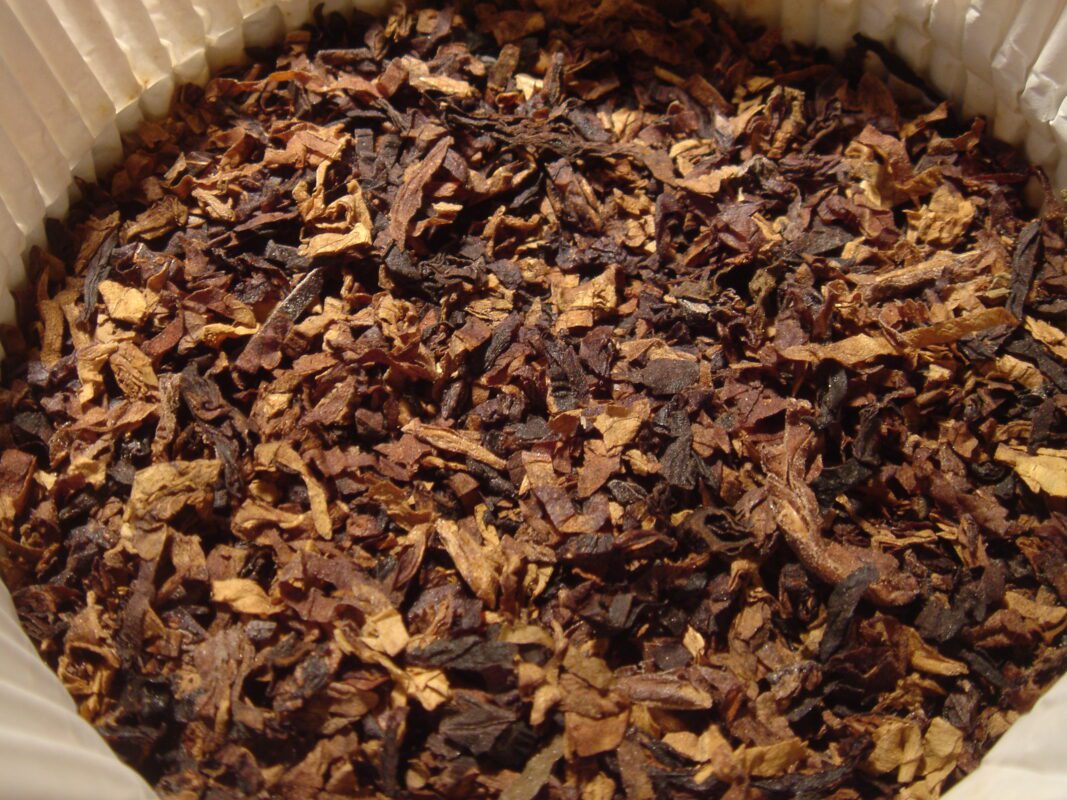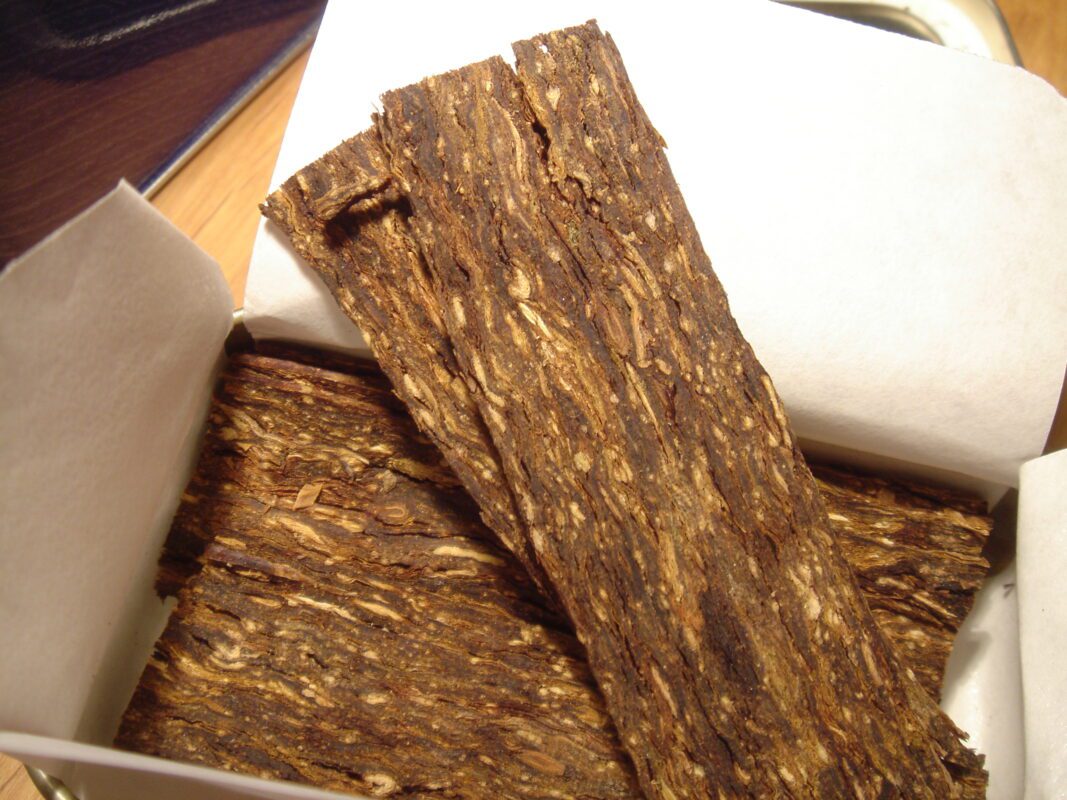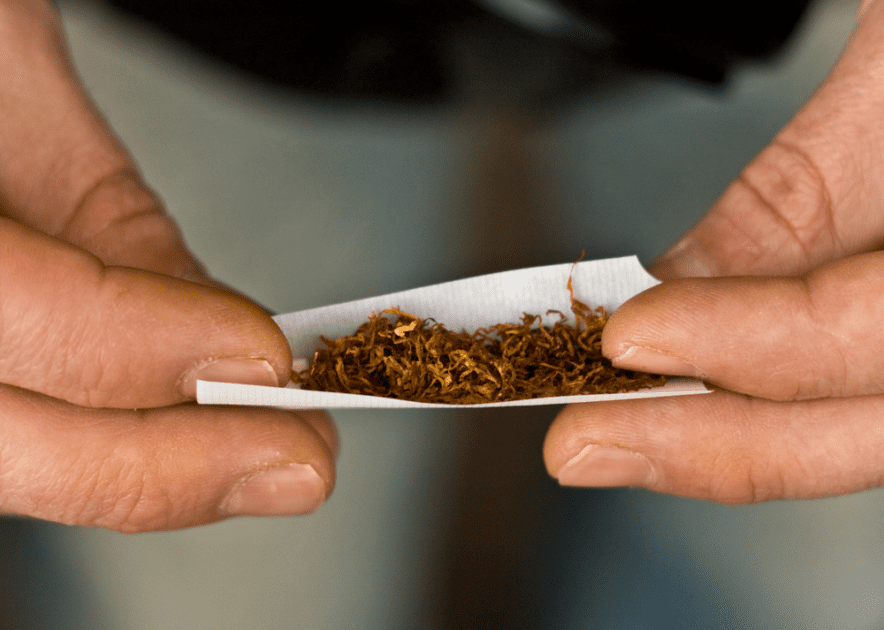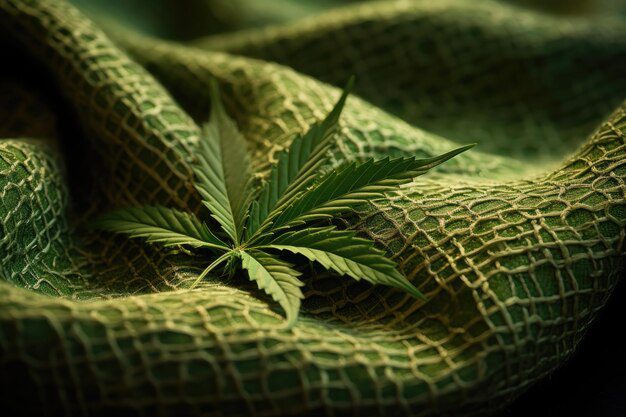Medicinal Applications of Tobacco Throughout History

The tobacco plant, Nicotiana, is likely the leading cause of death among herbs. Currently, tobacco smoking results in over 3 million deaths annually worldwide. If smoking habits persist, this number is projected to surpass 10 million by 2030. Adding to this toll are deaths from cancers related to oral tobacco use, further escalating the mortality rate. Clearly, tobacco stands as the foremost preventable cause of early death and disease globally.
Tobacco leaves and their smoke contain more than 4,000 chemicals, the most notable being nicotine, which was first extracted from tobacco leaves by Posselt and Reimann in 1828. Nicotine is the addictive component in tobacco and is lethal in small quantities. When inhaled, nicotine rapidly spreads to every organ in the body. It stimulates the brain and nervous system in small doses, while larger doses have a depressive effect. Nicotine also increases heart rate and blood pressure, potentially contributing to the higher incidence of thrombosis and atheroma among smokers. However, nicotine replacement therapy is utilized to help individuals quit smoking, as it eliminates exposure to numerous other harmful substances found in tobacco smoke, such as carcinogenic polycyclic aromatic hydrocarbons, N-nitroso compounds, acrolein, benzene, formaldehyde, ammonia, acetone, acetic acid, and carbon monoxide.
The link between tobacco and cardiovascular as well as lung diseases took centuries to be established. When Columbus first witnessed the indigenous people of the New World using Nicotiana in the 15th century, he brought the plant to Europe. At that time, all herbs were believed to possess potential healing properties. Nicotiana, in particular, gained fame as a cure-all, earning nicknames such as the ‘holy herb’ and ‘God’s remedy’. To grasp why Tudor-era physicians were so excited about this newly found plant, we need to consider the historical context.
The Historical Use of Tobacco as a Medicinal Herb in America
There are over sixty different species of Nicotiana, with the majority native to America, and a few to Australia. Nicotiana tabacum, the species now widely cultivated for commercial tobacco, likely originated in South America. Meanwhile, Nicotiana rustica, another significant species, came from North America. When Columbus arrived in 1492, he encountered Native Americans cultivating and using tobacco for both recreational and medicinal purposes. His sailors noted that the natives of Cuba and Haiti smoked the leaves, a practice later confirmed by other European explorers. Interestingly, the name “tobacco” was a misnomer, originally referring to a cane pipe with two branches used by Native Americans to inhale smoke. The plant itself was called by various names, including petum, betum, cogioba, cohobba, quauhyetl, picietl, and yietl, some of which appeared later in botanical texts and medical references.
As early as October 15, 1492, Columbus noted that a man in a canoe near the island of Ferdinandina carried dried leaves, which were valued for their health benefits. That same year, two of his crew members observed people in what is now Cuba using a burning torch containing tobacco, which was later understood to disinfect and ward off disease and fatigue. Columbus also noticed that inhaling cogioba through the tabaco induced unconsciousness, leading to speculation that this effect might have been used as an anesthetic during frequent trepanning operations of the time.
In 1500, Nino and Guerra observed that Native Americans used a mixture of tobacco and lime or chalk as a toothpaste to whiten their teeth, a practice also noted by Vespucci in Venezuela around the same period. This tradition persists in India today, where powdered tobacco, known as masheri, is used for dental care, and tobacco toothpaste is commercially available.
By around 1500, the idea of tobacco as a cure-all began to spread. Portuguese explorer Pedro Alvarez Cabral reported from Brazil that the herb betum was used to treat a variety of ailments, including ulcerated abscesses, fistulas, sores, and chronic polyps. He noted its powerful efficacy in severe cases, earning it the nickname “the holy herb.” Additionally, many accounts of tobacco’s medicinal uses among Native American populations surfaced. In 1529, Spanish missionary Bernadino de Sahagun documented the medicinal uses of tobacco from four Mexican physicians. According to his findings, inhaling the odor of fresh green leaves alleviated persistent headaches. For colds and catarrh, green or powdered leaves were rubbed inside the mouth. Neck gland diseases were treated by applying a mixture of crushed tobacco plant and salt to the lesion.
Although later accounts of Native American tobacco use may be less reliable, in 1934, Fernando Ocaranza summarized its pre-1519 medicinal applications in Mexico. He described its uses as an antidiarrheal, narcotic, and emollient. Tobacco leaves were applied to relieve pain, used in powdered form for catarrh, and applied to heal wounds and burns. Numerous other reports highlight the extensive medicinal use of tobacco by pre-Columbian Native Americans. This widespread usage explains why travelers were eager to bring the plants and seeds back to Europe.
The Historical Use of Tobacco as a Medicinal Herb in Europe
In an era when treatments for numerous diseases were being actively sought and various herbs were experimented with for their potential therapeutic benefits, the discovery of a new herb with reputed medicinal properties sparked significant excitement. This enthusiasm was so profound that Nicolas Monardes, a Spanish physician and botanist, included this herb in his work originally published in the 1570s, later translated into English as “Joyful Newes out of the New-Found World.” This work contains much of the early knowledge about medicinal tobacco.
Tobacco quickly became a staple in various herbals and pharmacopeias produced by physicians, botanists, explorers, missionaries, and historians across Europe. From 1537 to 1559, many books published in Europe and Mexico detailed the medicinal uses of tobacco among the indigenous populations of the New World. Eyewitness accounts described its use for treating general bodily ailments, catarrh, colds, and fevers, aiding digestion, preventing hunger and thirst, serving as a purgative, and acting as a narcotic.
The exact species of Nicotiana first brought to Europe remains uncertain. It is believed that Flemish herbalist Rembert Dodoens, based in Antwerp, published the earliest illustration of Nicotiana rustica in his 1554 work “Cruydeboeck,” likely drawn from a specimen plant. Dodoens mistakenly labeled the figure as Hyoscyamus luteus (yellow henbane), perhaps due to its narcotic properties. In Vienna, Fuchs included four illustrations of Nicotiana rustica and Nicotiana tabacum in his extended herbal of 1542, although this work was not published. An illustration from around 1570 provides further historical context.


During the 16th century, herbals not only cataloged various plants but also detailed their medicinal uses. One significant example is an illustration from around 1555 by the Franciscan monk André Thevet in Brazil, depicting smoke being blown at a man from a rudimentary cigar. The condition being treated was later identified as yaws. Thevet cautioned that smoking this substance (petum) could lead to weakness and fainting. He wasn’t alone in his concerns about tobacco; botanist and physician Conrad Gesner also analyzed tobacco leaves and highlighted their toxic qualities. Despite these warnings, many medicinal herbs of the time had similar toxic properties, and tobacco was widely prescribed for various ailments throughout the sixteenth century. One of the most noteworthy and persuasive uses of tobacco was for treating a condition known as Noli-me-tangere, characterized by slow-spreading ulcerating skin lesions. Later research suggested that this term encompassed conditions such as lupus and syphilis, with the most common cause likely being basal cell carcinoma (rodent ulcer).
Around 1560, the French ambassador to Lisbon, Jean Nicot, was introduced to a peculiar herb by the keeper of a prison he visited. This herb, identified as a plant from Florida, thrived in Nicot’s garden. One of Nicot’s pages, suffering from a severe skin lesion on his face, began applying crushed tobacco leaves and juice to the affected area. Nicot, upon hearing this, instructed the treatment to continue for eight to ten days. By the end of this period, the lesion had completely healed. A respected physician to the King of Portugal oversaw the treatment and confirmed its success.
Encouraged by this cure, Nicot shared the herb with the French court, including King Francis II and the Queen Mother, for treating incurable carcinomas. Due to Nicot’s generosity, tobacco became known as “the ambassador’s herb” or “nicotiane,” a name that evolved into “nicotine.”
Nicot utilized tobacco to heal various ailments. He treated the father of one of his pages for a two-year-old ulcerated leg, which healed within ten to twelve days. Similarly, a woman with a severe ringworm infection on her face and a captain’s son suffering from scrofula experienced complete healing after eight to ten days of treatment. When a cook in Nicot’s household nearly severed his thumb, the steward used tobacco leaves to bind the injury, and it healed after several applications.
These treatments involved external application of tobacco leaves and juice. Various recipes were documented, including Monardes’ method of stamping fresh leaves in a clean mortar and applying both the juice and leaves to the wound. For a comprehensive healing ointment, he advised mixing a pound of fresh tobacco leaves with new wax, rosin, and common oil, boiling the mixture until the juice was absorbed, and then adding Venice turpentine. The concoction was strained through linen and stored for future use.
Despite the initial enthusiasm for tobacco’s medicinal properties, skepticism emerged early on. In 1602, physician Philaretes criticized the indiscriminate use of tobacco for various ailments across all age groups without specific dosages. A decade later, in 1612, Vaughan endorsed using dried tobacco under certain conditions to treat migraines, toothaches, and cold-related obstructions. However, he cautioned against its misuse, warning of potential harm.
John Cotta, also writing in 1612, described tobacco as a supposed cure-all that, through overuse, had become a cause of many illnesses. Similarly, in 1633, James Hart, a doctor of physic, warned against viewing tobacco as a miraculous cure, citing its excessive and disordered use as a significant cause of various dangerous diseases.
As the seventeenth century progressed, medical professionals increasingly distrusted tobacco as a remedy. Nonetheless, it remained in pharmacopeias. John Wesley’s “Primitive Physick,” first published in 1747, recommended tobacco for earaches, epilepsy, and hemorrhoids. These recommendations persisted in editions as late as 1847.
The Origins of Tobacco’s Medicinal Use in the 19th Century
In 1828, the isolation of nicotine from tobacco leaves marked a turning point in medical attitudes towards tobacco. Recognizing the plant contained a dangerous alkaloid, the medical community grew increasingly wary of its use as a general treatment. Nicotine began to be used in controlled doses; for instance, nicotine salicylate in a 0.1% ointment replaced tobacco leaf infusions for treating scabies.
Despite this caution, tobacco smoke was still recommended for various ailments, including strychnine poisoning, constipation, strangulated hernia, tetanus, rabies, and intestinal worms. In a 1958 paper, Silvette and colleagues reviewed medical literature from 1785 to 1860, documenting case studies of tobacco treatments. Stewart later analyzed these 128 cases, reporting 97 successful treatments, 4 fatalities, 10 cases of poisoning, and 17 other outcomes. The successful treatments are detailed in Box 1.
Box 1 lists the various therapeutic uses of tobacco as identified by Stewart:
- External application of tobacco:
- Treating bites from poisonous reptiles and insects
- Alleviating hysteria
- Easing pain and neuralgia
- Relieving laryngeal spasm
- Managing gout
- Promoting hair growth
- Treating tetanus
- Addressing ringworm and rodent ulcer
- Healing ulcers and wounds
- Acting as a respiratory stimulant
- Rectal administration of tobacco:
- Relieving constipation
- Controlling hemorrhoidal bleeding
- Oral administration of tobacco:
- Treating strangulated hernia (smoking by mouth)
- Managing malaria or intermittent fever
- Dislodging obstructive material from the esophagus by inducing vomiting
- Inhalation of tobacco:
- Treating nasal polyps
Todd, in his Lumleian Lecture of 1849, expressed skepticism about the claimed effectiveness. He asserted that tobacco indeed lowers the cord’s polar state but concurrently induces severe depression. He also deemed it an unsafe and difficult-to-control remedy, recounting instances where patients, though cured of Tetanus, perished under its use. As the nineteenth century progressed, alternative methods for administering tobacco treatments emerged, such as aetherial tinctures, poultices, and snuff patches.
Tobacco’s Medicinal Use in the 20th Century
Even into the twentieth century, the medicinal use of tobacco persisted. In 1924, a salve composed of burned tobacco leaves and lanolin was promoted as a drying agent, stimulant, and antiseptic for conditions such as itching, ringworm, athlete’s foot, superficial wounds, and ulcers (it was also reputed to polish metal). Furthermore, debates continued regarding its disinfectant properties. Historical accounts show that tobacco smoke was employed in the New World to combat diseases discovered by Columbus, and in the sixteenth century, doctors applied tobacco leaves, ointments, or poultices to infected wounds.


During the London plague of 1665, children were encouraged to smoke in their classrooms, and in 1882 during a smallpox outbreak in Bolton, tobacco was distributed to residents of a workhouse. However, claims about these protective effects were not universally accepted. In 1889, an article in the British Medical Journal acknowledged experimental evidence suggesting that the pyridine in tobacco smoke could kill germs, and noted that smokers appeared less susceptible to diseases like diphtheria and typhus. Yet, it concluded that smokers who tolerate tobacco likely possess robust health in other ways, enhancing their ability to resist infections. The article cautioned non-smokers against taking up smoking, as it could potentially weaken their resistance to diseases despite the germ-killing properties of tobacco smoke. An anonymous piece in The Lancet in 1913 discussed the pyridine content in tobacco smoke and presented experiments demonstrating its ability to destroy the comma bacillus of cholera, yet reiterated concerns that smoking could have constitutional effects that diminish the body’s ability to resist diseases.
In the latter part of the twentieth century, focus shifted towards disorders affecting the brain and nervous system. In 1926, Moll documented that subcutaneous nicotine injections improved muscular movement in nine out of thirteen patients suffering from post-encephalitic parkinsonism. While the benefit was temporary, Moll asserted that the immediate outcomes were unequivocal. Similar observations were noted in several case-control studies indicating a lower relative risk of Parkinson’s disease among smokers compared to non-smokers, although other influencing factors may have contributed to this observed effect. Similar studies also suggest a potential inverse relationship between cigarette smoking and Alzheimer’s disease as well as Tourette’s syndrome, although these findings warrant cautious interpretation.
Conclusion
Historically, tobacco has been phased out from pharmacopeias and medical practices. Stewart’s analysis up to 1860 concludes that tobacco’s primary benefit was often limited to pain relief in many cases. Reflecting on current literature, several key observations stand out. Firstly, tobacco was frequently overestimated in its therapeutic capabilities, unlike medieval herbs that were typically used for specific ailments rather than a wide array of disorders from head lice to tetanus. Secondly, prevailing discussions often oversimplify tobacco’s medicinal potential by focusing solely on nicotine, disregarding numerous other alkaloids present in various Nicotiana species. Thirdly, tobacco leaves and juices were commonly employed for treating skin ailments, including potential implications for conditions like basal cell cancer—raising the question of whether tobacco contains anti-cancer agents akin to the discovery of vinca alkaloids in periwinkle. Lastly, therapeutic use of tobacco suffered from inconsistent dosing practices, highlighting the risks associated with unregulated dosage of any beneficial substance. It is proposed that we move beyond biases stemming from the adverse effects of tobacco smoking and systematically explore tobacco leaves for their potential therapeutic compounds.


